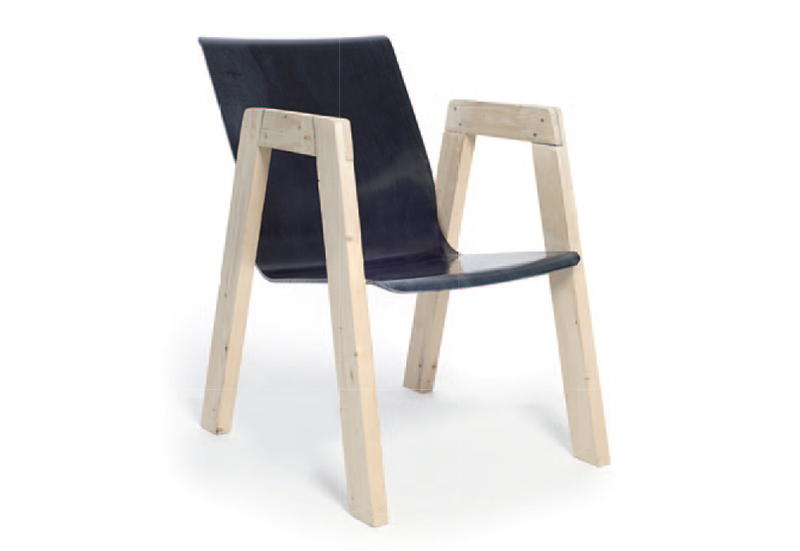After proving the technical and economic feasibility of textile based composites, the next step for me at KICI was to identify possible applications for this material and finding commercial partners to develop these ideas. Two parallel projects ran side by side: more complex but higher grade thermosetting textile composites on one hand and cheaper but series producible thermoplastic textile composites on the other hand.
Thermosetting composite products requires a milled mould and relatively long curing times. However, they allow for more complex shapes, higher strength, and integration of functions and logo’s. This increased added value can justify the higher production costs in some cases. For this material I searched for a premium partners which could appreciate the added value of this material. G-star was willingly to explore the possibilities and together with NPSP, a thermoplastic composite production company with a focus of sustainability, several samples and prototypes were made to demonstrate the possibilities: a “Rhino” decoration article, floor tiles, shop wall panels, clothing hangers, mannequins, etc)
The second path was the thermoplastic material version, suitable for large scale continuous production which, combined with the lower material costs, leads to lower production costs per unit. Additionally, it makes it possible to thermoforming flat sheets into complex shapes and creates the potential to further extend the life span by re-recycling the material (but the quality decreases of course). Several partners showed their interest in this material, but most progress was made with Dekker and a small design bureau MMD. The goal was to produce a kitchen top, with incorporated sink.
The following link leads to a document (pdf) which gives an overview of some of the product sampes made: KICI Poster Innoveren
Unfortunately, none of these projects lead to any commercial applications. Some partners posed very high requirements which could not be met at these early stages, others were not willing to take the financial risk or had other priorities.



